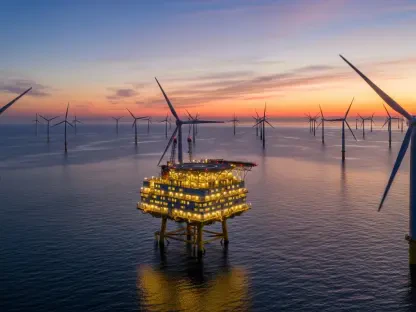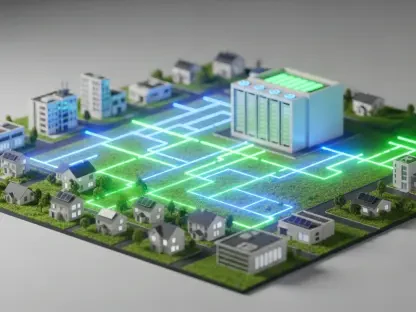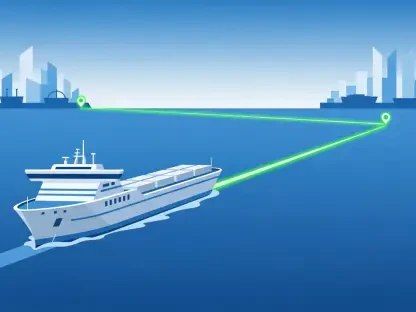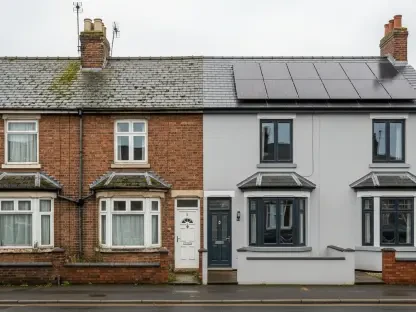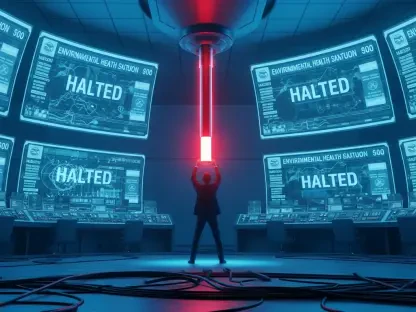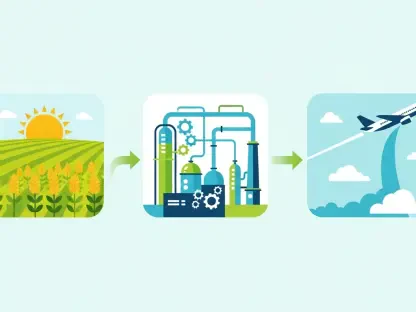The evolution of communication technology has been a remarkable journey, from the medieval ages’ basic oral and written interactions to today’s complex systems incorporating televisions, radios, mobile phones, and the internet. The 1900s marked a significant era, known as the “Rise of Connectivity,” with groundbreaking innovations such as wearable computers, M2M (machine-to-machine) technology, mobile phones, and the internet laying the foundation for the expansive realm of IoT we witness today. This era set the stage for a world where devices could connect and interact seamlessly, paving the way for today’s interconnected environment and the revolutionary possibilities it holds.
The Impact of IoT on Energy Efficiency
IoT has revolutionized how devices interconnect, creating a seamless web of smart entities capable of collecting and analyzing data to enhance energy efficiency and environmental resilience. The transformation of everyday devices into intelligent systems has played a substantial role in curbing energy waste. Through IoT app development, a plethora of smart technologies has emerged, aimed at minimizing waste, reducing carbon emissions, maximizing the use of conventional power sources, and promoting material reuse. This has been most evident in domains such as smart cities, homes, healthcare, and agriculture, all illustrative of sustainable solutions fostered by IoT.
In smart cities, for instance, IoT technology enables the optimization of energy use in street lighting, traffic management, and public transport systems, significantly reducing the carbon footprint. In homes, smart thermostats, energy-efficient appliances, and automated systems contribute to energy savings by learning user habits and adjusting usage accordingly. The healthcare sector benefits from IoT through remote patient monitoring and intelligent medical devices, reducing the need for frequent hospital visits and thereby conserving energy. Agriculture has also seen the rise of smart irrigation systems that deploy real-time data to optimize water usage, ensuring neither water nor energy is wasted.
Introduction to Green IoT
The term “Green IoT” signifies the commitment to integrating energy-efficient practices into IoT applications, services, and devices to curtail energy consumption and mitigate carbon emissions. The BBC study referenced in the article points out that electronic items and associated systems account for 3.7% of global greenhouse emissions, underscoring the urgency of incorporating greener technologies. Critical components of Green IoT research encompass green RFID tags, green sensor networks, and green cloud computing, all aimed at leveraging renewable energy sources like solar and wind to drive down the environmental impact. Additionally, advanced technologies such as artificial intelligence and mathematical algorithms are highlighted as instrumental in making IoT more intuitive and environmentally friendly.
Advances in AI and algorithms enable devices to perform operations more efficiently, predicting usage patterns and optimizing processes to conserve energy. For instance, algorithms can help in the automatic scheduling of devices to operate during off-peak energy hours, reducing the strain on power grids and enhancing overall energy efficiency. The development and deployment of green sensor networks and RFID tags enable real-time monitoring and data collection, facilitating responsive actions that can minimize wastage and promote sustainable practices.
Green IoT Lifecycle
The lifecycle of Green IoT products encompasses design, manufacturing, deployment, and recycling stages, all focusing on reducing energy use and carbon emissions to minimize environmental harm. Key aspects of green design include the development of energy-efficient computing devices, networking structures, and communication protocols. The concept also bifurcates into “Green in IoT” and “Green by IoT,” referring to the environmental considerations in software and hardware design. Software designed with green principles aims to be reusable, resource-efficient, and necessitates minimal processing and memory resources.
During the manufacturing phase, using sustainable materials and energy-efficient processes can further reduce the carbon footprint of IoT products. Deployment practices that employ energy-saving techniques, such as remote updates and optimally locating devices to maximize efficiency, also play a crucial part in the lifecycle. Lastly, the recycling stage ensures that resources are reclaimed and reused, minimizing waste and environmental impact. These comprehensive measures across the lifecycle ensure that Green IoT products contribute positively to sustainability goals.
Principles of Green IoT
Several guiding principles shape the design, implementation, and operation of IoT systems under the Green IoT paradigm, ensuring energy efficiency and sustainability. These principles help businesses create durable, resource-efficient, and eco-friendly IoT solutions:
Power Conservation is a primary step, beginning with switching off non-essential facilities. For example, the widespread use of internet videos to fall asleep increases data center strain, negatively impacting the environment. Implementing sleep scheduling for sensor nodes can further conserve energy, similar to tactics used in Wireless Sensor Networks (WSNs). These strategies ensure that power is utilized only when necessary, significantly reducing overall consumption.
Adopting Green Communication Techniques involves systems like cognitive radio (CR) systems that can alleviate spectrum congestion and optimize efficiency by adapting their operational modes to environmental changes. In wireless communication, MIMO (Multiple Input, Multiple Output) technology improves transmission rates and system efficiency, resulting in lower energy consumption. By dynamically adjusting to real-time data, these communication techniques ensure that energy and resources are utilized in the most efficient manner possible.
Automated Quality Monitoring and Low-code Development can lead to more sustainable software by removing excess functionality and optimizing energy efficiency. Applications should be designed to adjust behavior based on power modes, operating environments, and real-time energy usage data. This proactive approach ensures the software’s operation is as energy-efficient as possible, dynamically responding to varying conditions and demands.
Enhanced Data Path Efficiency can improve wireless communication energy efficiency by optimizing data channel lengths through refined routing methods and architectural designs. For instance, relay nodes can efficiently pass signals to destination nodes by monitoring broadcasts. This ensures that data is transmitted in the most efficient path, minimizing energy use and enhancing overall system performance.
Efficient Data Transmission focuses on the energy costs associated with data transfer. Data transmission, especially video streaming, consumes significant energy. Text messages have a far lower carbon footprint compared to phone calls or video transmissions. Using behavior analysis to predict and streamline data delivery, consolidating and compressing data, and lowering media resolution can reduce energy consumption. Such measures ensure that only necessary data is transmitted, reducing overall energy usage.
Green IoT Solutions in Various Sectors
IoT technologies are utilized across various industry sectors to enhance operational sustainability and reduce energy costs, resulting in greener solutions. In the realm of transportation, Shared Mobility Devices such as dockless e-scooters play a vital role. Governments advocate for IoT’s integration into the micro-mobility sector to diminish pollution and traffic congestion while ensuring real-time regulatory compliance. Equipped with sensors and GPS trackers supported by IoT, these devices enhance network coverage and monitoring capabilities. Combining IoT with AI, cloud computing, and computer vision fosters robust, eco-friendly solutions for sustainable transportation.
Smart Irrigation systems represent another crucial sector where Green IoT makes significant impacts. These systems utilize cost-effective IoT devices creating cyber-physical systems that irrigate plants based on real-time data. Sensors track parameters like temperature, humidity, and soil moisture, ensuring plants receive optimal water amounts and promoting water conservation sustainability. This not only conserves water but also optimizes energy usage in agricultural practices, contributing significantly to environmental sustainability.
In the healthcare sector, Smart Healthcare solutions leverage IoT to enhance patient care while reducing energy consumption. IoT solutions in healthcare focus on health monitoring, home security, and caregiver communication, particularly for senior care. Telemedicine and mobile health solutions gained prominence during COVID-19, benefiting seniors and encouraging a majority of them to embrace telehealth services. IoT-enabled remote monitoring systems are pivotal for preventive healthcare, lowering overall healthcare and hospital system costs, and utilizing big data for rapid health condition detection. These innovations ensure better healthcare outcomes while minimizing the environmental impact.
Future Prospects of Green IoT
The evolution of communication technology is a fascinating journey that spans from the simple oral and written methods of the medieval ages to the intricate systems we rely on today, which include televisions, radios, mobile phones, and the internet. The 20th century, particularly the 1900s, marked an important period dubbed the “Rise of Connectivity.” This era saw groundbreaking technological advances, such as wearable computers, M2M (machine-to-machine) technology, mobile phones, and the advent of the internet. These innovations laid the groundwork for the expansive Internet of Things (IoT) landscape we experience today. This period of rapid development set the stage for a world where devices could connect and interact effortlessly, paving the way for today’s interconnected environment. The seamless interactions between devices we see now were made possible by the foundational advancements of the 1900s, shaping the revolutionary potential and vast possibilities of our modern tech-driven world.


